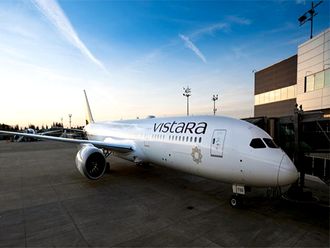Last December, Russia completed the first stage of its East Siberian—Pacific Ocean (ESPO) pipeline, a project that hopes to capture some of the growing oil demand in the Asia-Pacific region.
"This is a strategic project because it allows us to enter completely new, growing, promising markets of the Asia-Pacific region," said Russian Prime Minister Vladimir Putin on opening the new line.
The first stage of the pipeline that spans almost 2,700 kilometres stretches from East Siberia to the Amor region or about 70km north of China's borders. From there the crude travels by rail either to China or to the oil terminal at Kozmino on the Pacific Ocean.
Currently a pipeline to China is under construction and the Chinese will also extend the pipeline to Daqing, which is 900 kilometres further south. The second stage of the pipeline will see the project reaching its intended Pacific Ocean end point with the addition of a 2,100km section to be completed by 2014.
Russia, for a long time, exported oil to the tune of 300 thousand barrels a day to China by rail and therefore the new pipeline is likely to enhance the efficiency and raise the quantity exported. There is almost a similar amount of oil produced from Russian oil fields in the East that is already exported to Asia-Pacific countries. Therefore, it is not a new idea for Russian crudes to be available there, and the fear of competition to the Arab Gulf crudes may be exaggerated.
Capacity increase
When the Russian ESPO system is completed by 2014, its capacity is expected to be 1.6 million barrels a day (mbd), but this capacity is not expected to be reached until 2020 when the East Siberian fields are fully developed. Therefore only one million barrels a day of additional Russian crude will become available in the region by 2020. Current exports of Opec countries in the Gulf to the Asia-Pacific are nearly 12 million barrels a day and some volumes are also coming from North Africa and West Africa. This pattern is expected to continue for the foreseeable future and volumes will increase as demand evolves.
Oil demand in Asia excluding the Middle East is probably at 17.7 mbd and is expected to touch 25.2 mbd in 2020 and 33.1 mbd in 2030. Given that Asian production is close to 8 mbd in 2010 and is likely to increase very slowly to 8.3 by 2020 and may decline after that, oil exports to the region are seen to be increasing fast to meet the demand. I therefore expect Gulf oil exports to the region to be of the order of 16 mbd by 2020 and 24 mbd by 2030.
In my view Russia cannot under any circumstances compete with the Gulf producers given its current or future volumes.
It may be a short-term concern that Russian exports to the Pacific have increased at a time of economic crisis and they may for a while induce some pressure on prices. But the market will come around to the reality that it has to rely on Gulf crudes and the Russians are likely to cooperate in this regard to obtain the best value for their exports.
The Russians would want to recover their total expected investment of $26 billion (Dh95.4 billion) and the high operating cost of such a long pipeline passing through a cold and difficult region; therefore, it is unlikely they will undercut oil prices, especially given that Russian crude will be guaranteed a market there as the figures mentioned above show.
It is to be observed that Russia's main objective of the pipeline is to lessen its dependence on exports to the stagnant European market and possibly even open a route to the West Coast US market, where supplies from Alaska may decline. Competition with Gulf oil, if any, cannot be a realistic objective. The Russians may have discounted the price initially to create interest but will they continue to do so when the market is there for all?
Gulf strategic storage
Some important oil producers in the Gulf such as Saudi Arabia and the UAE are enhancing their position in the region by establishing strategic storage in Japan and Korea to help them absorb any short-term ups and downs in the market. Efforts by Saudi Arabia and Kuwait to maintain and improve their position in the market take the form of joint ventures to establish new refineries and petrochemical plants in China and elsewhere, which will depend on Gulf oil.
Every time a new oil development somewhere comes on stream, fears are unnecessarily raised for Gulf oil producers such as the threat of the Caspian surpassing Saudi Arabia and now the ESPO eroding Gulf market share. If competition is sometimes good, cooperation is even better and the Russians know that.
The writer is the former head of the Energy Studies Department at the Opec Secretariat in Vienna.












